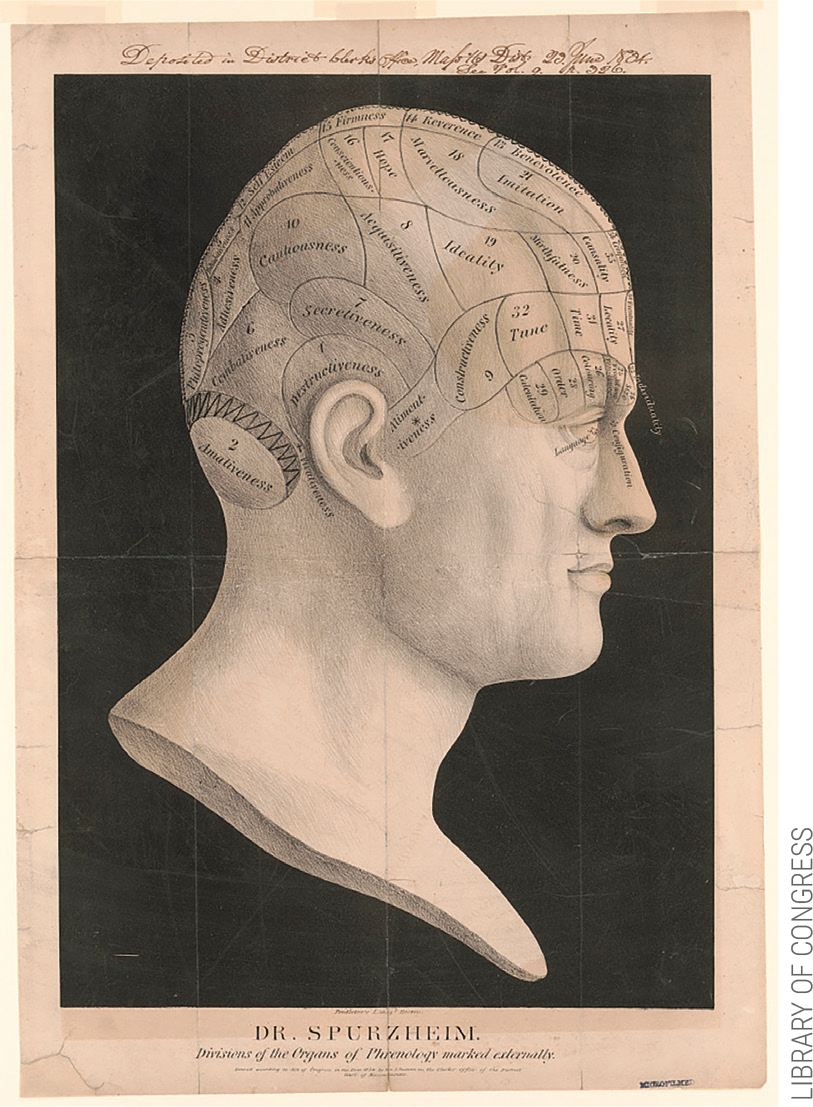Right to the Source
A Bump on the Head
The Science Teacher—September/October 2020 (Volume 88, Issue 1)
By Michael Apfeldorf

Dr. Spurzheim--divisions of the organs of phrenology marked externally https://www.loc.gov/item/96510110/
Phrenology was a pseudoscientific discipline invented by German physician Franz Joseph Gall in 1796. Its central claim was that a person’s character and abilities could be discerned by reading the curvature—or bumps—of their skull. Phrenologists believed that the brain was composed of multiple organs, each associated with a different characteristic, such as “acquisitiveness” (a propensity to acquire and steal) or philogenitiveness (the tendency to love one’s offspring). These organs would grow or shrink based on use, resulting in peaks and valleys along the brain’s surface. As the skull molded to accommodate these peaks and valleys, it served as the perfect roadmap for understanding the underlying brain. Dr. Johann Spurzheim, whose name appears with the lithograph, was a key collaborator of Gall and served as his anatomist until 1813.
Show your students Dr. Spurzheim’s diagram (featured here), published in Boston ca. 1834, illustrating “divisions of the organs of phrenology marked externally.” What claims do they think are being made by its author? Where might the diagram have appeared and for what audience? Do students think there is any truth to the author’s claims? How could they go about proving their hypotheses?
Phrenology was popular in the early 19th century. People could go to phrenology parlors to have the shape of their heads examined. Others attempted, wrongly, to use the pseudoscience to “prove” theories of racial superiority.
Ultimately, phrenology’s claims could not be supported through rigorous scientific methods. Gall’s ideas were based on limited observations, and scientists were unable to reproduce his findings. Researchers such as Jean Pierre Flourens further noted that animals or people who damaged or lost parts of their brains did not lose functionality as predicted by phrenological models. Some tenets from the model proved to be insightful, such as the notion that the brain is divided into regions which serve different functions, although it is not divided as Gall thought, nor does the brain shape the skull.
As students reflect on the history of phrenology, they may also reflect on claims currently being made regarding the brain and human behavior, and ask: what claims are supported through scientific rigor?
Michael Apfeldorf (mapf@loc.gov) is an Educational Resources Specialist at the Library of Congress.
About the Source
“Dr. Spurzheim—divisions of the organs of phrenology marked externally” is a lithograph available free online from the Library of Congress at: https://www.loc.gov/item/96510110/. It is one of 20 lithographs published by Pendleton’s Lithography of Boston that are available online from the Library. A search of the Library’s web site on the word “phrenology” yields multiple resources, including 15 additional prints/photographs and 14 manuscripts, including one photograph of a woman with a psychograph—or phrenology machine -- on her head. Meanwhile, searching “phrenology” in the Chronicling America historic newspaper archive (https://chroniclingamerica.loc.gov/) reveals articles and advertisements that illustrate how the concept was portrayed in popular media, and a special topics page provides background information and curated articles regarding the noted phrenologist, Jessie Fowler (https://www.loc.gov/rr/news/topics/jessiefowler.html).
Featured Source
Dr. Spurzheim--divisions of the organs of phrenology marked externally https://www.loc.gov/item/96510110/.
Biology Lesson Plans Life Science High School


